.
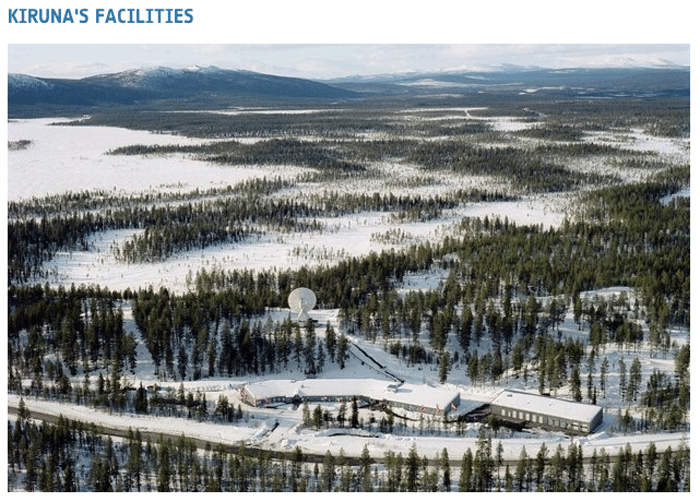
Space plays a role in Kiruna. Here is Esrange, SSC base for launches, satellite control and testing of the spacecraft. There is also the Institute of Space Physics. It is a government agency under the Ministry of Education that examines space and atmosphere and constructing instruments to measure such as the northern lights and solar wind and also builds instruments studying space physics from the international space probes.
There is also the Department of Space Science, an institution at Luleå University of Technology, which trains future aerospace engineers and space scientists in collaboration with the IRF. Outside Kiruna is ESA's satellite station Salmijärvi. The four organizations have different main tasks but benefit greatly from each other. They also benefit from Kiruna's geographical location.
- Kiruna is far enough north to study auroras. That was one reason that the IRF was founded here as Kiruna Geophysical Observatory in 1957, says Rick McGregor, research and development manager at IRF in Kiruna. It is also an advantage to be as close to the pole when we communicate with satellites traveling in a 'polar orbit.
Just south of Kiruna is also the scientific organization EISCAT one of its four radars. EISCAT study mainly studying Earth's ionosphere and upper atmosphere. Atmospheric scientists have a geographical advantage as the Kiruna is situated on the edge of the polar vortex. It is an area with strong currents in the stratosphere formed over the Arctic during the winter months.
- Polar Vortex plays a significant role in ozone depletion. Therefore, many research groups who come to Kiruna area during winters to study the ozone problem, said Rick McGregor.
Northern, safe and sound infrastructure
One of the advantages of Kiruna uppsändningsplats is that there is plenty of room for sounding rockets that fall on.
But it is not just the northern location that speaks for Kiruna. There are other areas that are equally far north but not the other benefits that the city is equipped with.
- Esrange in Kiruna because Europe needed a uppsändningsplats far north, says Johanna Bergström Roos, information manager at Esrange. To launch site should be safe also need large areas of land around it that can be used to strike places such as sounding rockets. The type of areas abound in such Siberia and Greenland. But we also needed to have the infrastructure such as roads, railways, aviation and a real town near Spaceport.
The first rocket from Esrange postponed 1966th When facing scientists probe rockets against nocturnal phenomenon auroras and noctilucent clouds. Nowadays it is not only scientists who sends up experiments with rockets and balloons from Esrange.
-
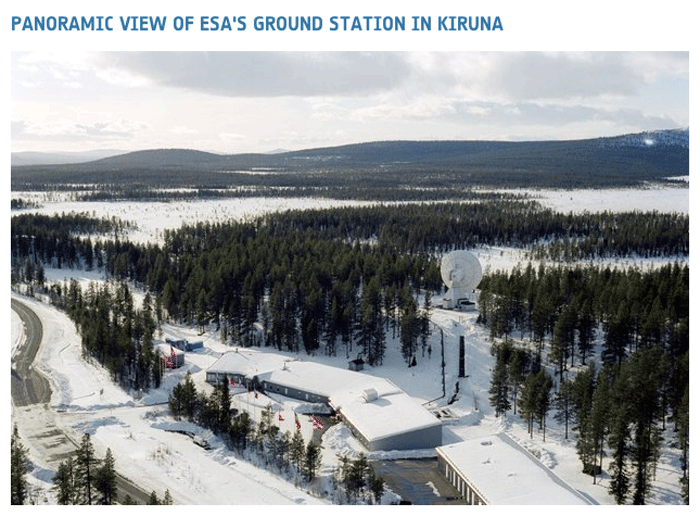
-
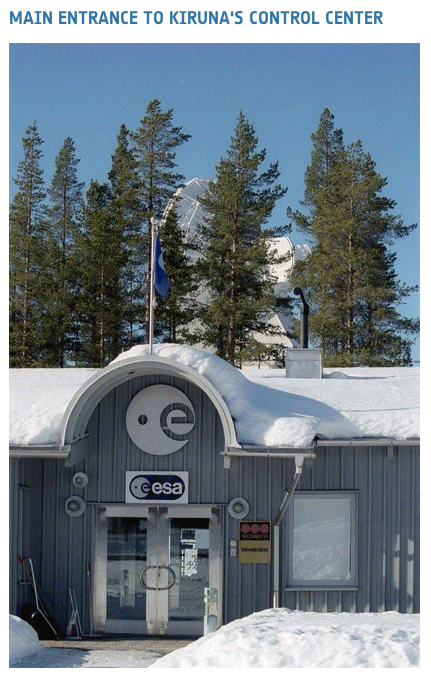
-
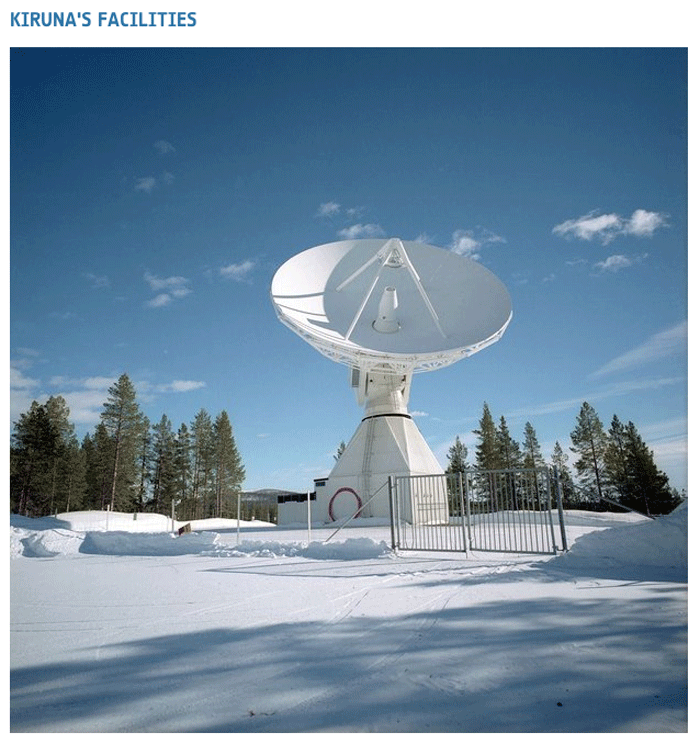
-
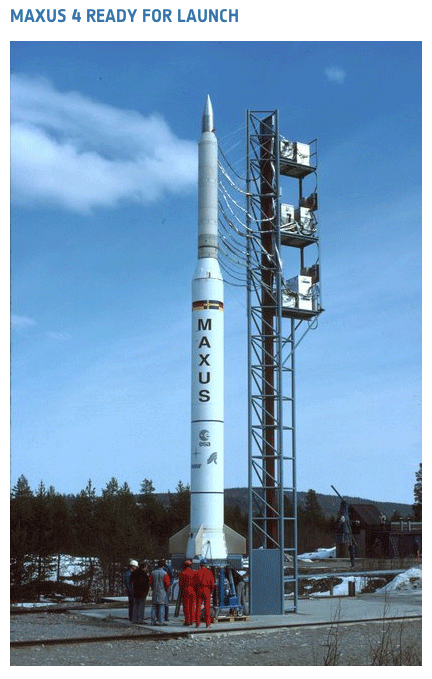
-
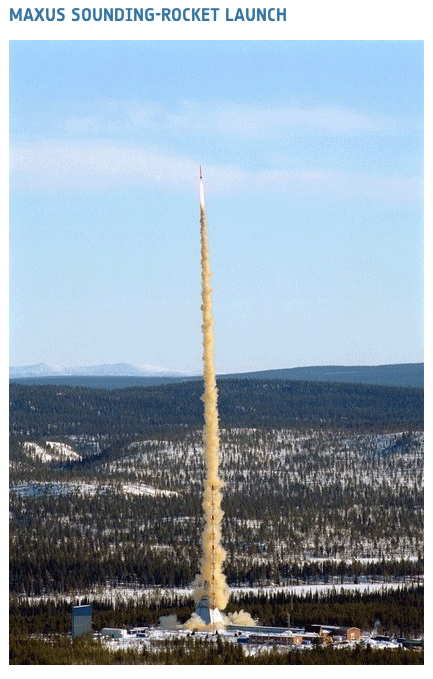
-
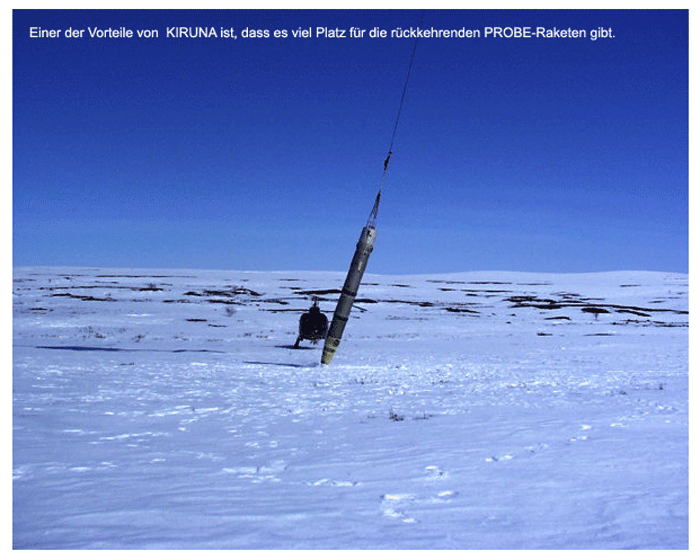
-
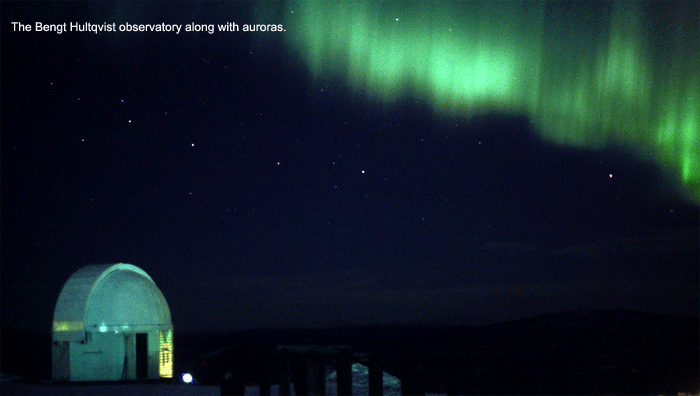
The Bengt Hultqvist Observatory is situated 519 m above sea level at 67°51.48N | 20°15.99E. Its coordinates make
the observatory one of the northernmost astronomical observatories in the world, beaten only by
Tromsö University observatory in Skibotn, Norway.
The inauguration ceremony took place on the 19th of February 2004. One of the speakers on this occasion was no
less than Professor Emeritus Bengt Hultqvist who started all space activities in Kiruna and also gave the observatory its name.
The Bengt Hultqvist Observatory is a cooperative project between Rymdgymnasiet and the Department of Space Science (IRV).
Rymdgymnasiet, which is an upper secondary school specializing in space studies, received money in 2003 for an astronomical
observatory. IRV already had a Meade catadioptric telescope but no observatory and a cooperation was the obvious solution.
The teacher and craftsman Sven-Erik Tervaniemi at the upper secondary school Hjalmar Lundbohmsskolan offered to build
the observatory with the assistance of his students. A location for the new observatory was found at the former military
area I-22 situated in Kiruna. The observatory is the first and only astronomical observatory in Sweden completely made of wood.
It has a diameter of 5.2m and a height of 4.5m.
-

-
Fotos: ESA-Schweden
6485 Views
